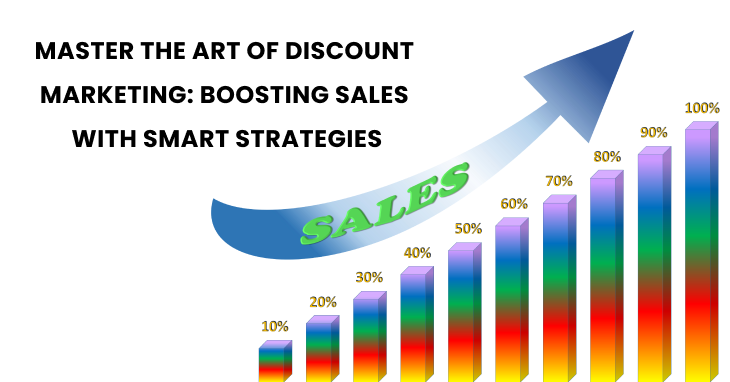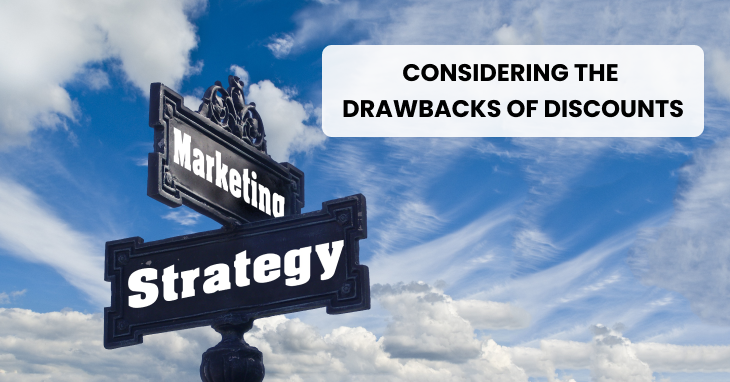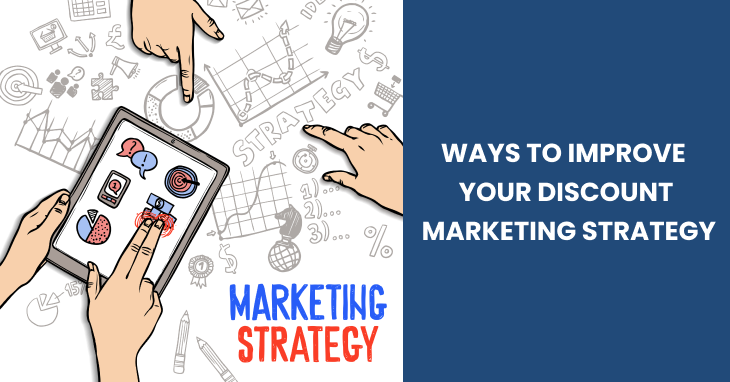I hope you enjoy reading this blog post.
If you want to get more traffic, Contact Us

Click Here - Free 30-Minute Strategy Session
Be quick! FREE spots are almost gone for this Month. Free Quote

Discover the potential of discount marketing beyond consumer savings. Did you know that businesses can leverage discounts to drive revenue, boost conversions and increase email newsletter sign-ups?
In this blog post, we delve into the psychology behind discounts, offering valuable insights from our survey results. Explore how you can optimise your discount marketing strategy by aligning with consumer psychology and leveraging these insights.

Click Here – Free 30-Minute Strategy Session
Be quick! FREE spots are almost gone for this Month
If you’re curious about the advantages of discount marketing for your business, this is a must-read.

It’s no secret that most consumers have a strong inclination towards saving money. However, when it comes to discounts, there are intriguing psychological factors at play that influence consumer behaviour.
Let’s consider the phenomenon of FOMO or Fear of Missing Out.
FOMO refers to the fear of missing out on a great deal and is indeed a significant motivator, there are additional factors that contribute to the allure of discounts.
What Does It Mean?
Interestingly, discounts have the power to enhance consumer happiness, even if only temporarily, leading to immediate purchase decisions.
A fascinating study revealed that a mere $10 voucher offered during online grocery shopping was enough to increase oxytocin levels (known as the “happy hormone”) by 14%! Moreover, participants who received a coupon reported a 49% increase in happiness after the study, compared to the group without a coupon, who reported a 31% increase.
These findings highlight the profound impact that discounts can have on consumer emotions and purchasing behaviour.
What Is Discount Marketing?
Discount marketing is all about offering a sales offer, discount or promotion so that you can gain more customers, increase your sales and get a higher ROI. As a business owner, your primary objective should be to create a perceived value for customers by offering lower prices.
Discount Marketing Examples:
Discount marketing can take various forms, such as:
The effectiveness of discount marketing relies on understanding customer behaviour, targeting the audience, creating a sense of urgency and aligning the discounts with overall marketing goals.
Discount marketing plans offer numerous advantages that can greatly benefit businesses. Here are some key advantages to consider:
It’s important to note that a discount marketing strategy should be implemented strategically and in alignment with overall business goals. Careful consideration of profit margins, target audience preferences, and long-term sustainability is crucial to ensure the advantages of marketing plans are maximised while maintaining a healthy bottom line.
Learn More: The 5 Most Popular Digital Marketing Strategies for 2023

It’s essential to acknowledge that discounts can have certain drawbacks. Let’s explore them further:
It’s important to strike a balance and use discounts strategically, taking into account the nature of your products or services, your target audience, and the overall brand image you want to cultivate. By carefully managing the frequency and timing of discounts, you can leverage their benefits while avoiding potential drawbacks.
As we discussed earlier, discounts can have a significant impact on consumer behaviour, creating a sense of urgency or triggering a scarcity mindset. The effectiveness of discounts largely depends on the type of discount offered. Here are some common discount types to consider:
The connection between psychology and marketing is undeniable, with marketing psychology being a specialised area within the broader field of psychology. Our survey, conducted among 1000 participants in the United States, sheds light on key findings related to discount marketing. Here’s what our data reveals:
When asked about factors that would change their minds about purchasing their initial site visit, 54.97% of respondents indicated that a discount would compel them to buy.
Among this group:
Regarding abandoned carts, 49.6% of respondents stated that receiving an email with a discount would motivate them to return and complete the purchase. Additionally, 15.5% mentioned that the promise of a free item in the email would incentivise them to convert.
Other factors influencing abandoned cart recovery include:
Willingness to Take Additional Steps:
The survey revealed the following willingness levels:
These survey results emphasise the significant impact of discounts on consumer behaviour, including their ability to convert non-purchasers, recover abandoned carts and drive additional actions from customers. By leveraging these insights, businesses can design effective discount marketing strategies tailored to their target audience.
Learn More: The Dos and Don’ts of Influencer Marketing

Utilise Customer Data Analysis: Dive deep into your customer data to gain insights into their preferences, buying patterns and how they respond to different discount offers.
Discount Marketing Tips:
Customise your discount marketing strategy to better suit their specific needs and motivations.
Implement Audience Segmentation: Divide your customer base into distinct segments based on relevant factors such as demographics, purchase history, or engagement level.
Discount Marketing Tips:
Target specific customer groups with tailored discount offers, increasing the likelihood of conversions.
Experiment with Various Discount Types: Conduct tests using different discount types, such as percentage discounts, dollar discounts or buy-one-get-one offers, to identify which ones resonate best with your audience.
Discount Marketing Tips:
A/B testing can provide valuable data on which discount types yield higher conversion rates and customer satisfaction.
Foster a Sense of Urgency: Integrate time-limited or limited-quantity offers into your discount marketing strategy to create a sense of urgency and prompt immediate action.
Discount Marketing Tips:
Incorporating elements like countdown timers, flash sales or limited-time promotions can instil a fear of missing out (FoMO) and motivate customers to make a purchase.
Personalise Discount Offers: Leverage customer data and segmentation to personalise your discount offers based on individual preferences and behaviours.
Discount Marketing Tips:
Tailor offers according to customers’ past purchases or browsing history can significantly enhance the effectiveness of your discount marketing strategy.
Remember, continuous monitoring and analysis of your discount marketing campaigns are vital for refining your approach over time.
Discount marketing encompasses a variety of strategies and methods designed to promote products or services by offering discounts or special deals. The goal is to create and publicise attractive offers that entice customers, increase sales and foster customer loyalty.
It involves implementing tactics that generate a sense of urgency and prompt immediate action, such as:
Discount marketing often leverages consumer psychology to influence purchasing behaviour. It also incorporates personalised offers based on customer segmentation and data analysis. This allows discounts to be tailored to individual customer preferences and behaviours.
A discount pricing strategy refers to an approach where products or services are offered at lower prices compared to their original or regular prices. This intentional reduction in price aims to attract customers, stimulate sales, and gain a competitive edge in the market.
The primary objective of a discount pricing strategy is to motivate customers to make purchases by creating a perception of value through reduced prices. Businesses utilise this strategy for various purposes, such as:
Discount pricing strategies can be implemented in different ways, including:
It is crucial for businesses to carefully assess the impact of discount pricing strategies on their profitability, brand perception and long-term customer relationships.
In conclusion, effective discount marketing requires a deep understanding of your customer base and a willingness to try new approaches. It involves careful consideration of various factors, including:
The positive aspect is that when implemented thoughtfully, discount marketing can have significant benefits for your business. It can lead to increased revenue, higher average order value (AOV) and improved conversion rates, giving your business a valuable boost.
What To Do?

LEAVE A REPLY